Article of the Month -
February 2004
|
Urban-Rural Interrelationship: Condition for Sustainable
Development
Svein Tveitdal, United Nations Environment Programme UNEP
This article was for the first time presented at
the 2nd FIG Regional Conference for Africa and the Arab Countries
“Urban-Rural Interrelationship for Sustainable Environment” in Marrakech,
Morocco, December 2-5, 2003.
 This article in PDF-format.
This article in PDF-format.
1. ABOUT UNEP
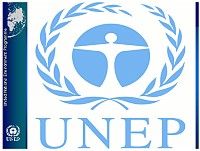
The United Nations Environment Program, UNEP, was established as a result
of the first global meeting on Environmental issues that took place in
Stockholm in 1972. For the first time the word Environment was put on the
global agenda and discussed by a large number of heads of states. As a
result, UNEP was established. We are, together with our sister organization
Habitat that also is represented here at this conference, the only major UN
organizations that are headquartered in a developing country, namely
Nairobi, Kenya. In my daily work I can assure you I am reminded of the major
problems that occur in mega cities in developing countries.
In our 30 years of existence UNEP has been working on documenting the
status and trend of the global environment, make this understandable for
decision makers, and made recommendations to all UN member states, on the
policy that is needed to protect the Earth for future generations.
2. OUR MOTTO IS ENVIRONMENT FOR DEVELOPMENT!
A lot has been achieved over these 30 years. More than 200 Multilateral
Environmental Agreements has been established, many of them with the help of
UNEP, to stop pollution, protect biodiversity, prevent land degradation and
stop global warming. But unfortunately, despite all these positive efforts
and achievements, the current policy is not strong enough. UNEP’s global
state of the environment reports shows, with a few exceptions, that in most
sectors and in most countries the development is not sustainable.
Later this week I am attending the 9th Conference of the Parties of the
Global Climate Convention in Milan. Climate Change is characterized by UNEP
as the most severe environmental problem of this century. UNEP is urging the
ratification of the Kyoto Protocol. But without the ratification of the US
and Russia, even if most signatory countries have ratified, this protocol
will not enter into force.
With the staggering technological development and a 50% increase in the
global human population since the meeting in Stockholm in 1972, we have
witnessed an accelerated pace of change, seemingly beyond our control. We
are placing in jeopardy many of the life-supporting systems on which we and
our descendents depend.
3. TRENDS IN CITIES
The galloping world-wide urbanization is one of the processes that more
have happened than being planned. A driving force might be that in general,
the income per head in a city is higher than in rural areas in the same
country. City governments have realized the impacts of this urban expansion
– not only environmental - but also social and economic. Policies were
post-facto, to manage the effects of expansion more than the expansion
itself. But gradually these policies have become more pro active.
UNEP, on our side, has also been gradually more interested in the
urbanization, and the urban-rural link, in a global sustainable development
context.
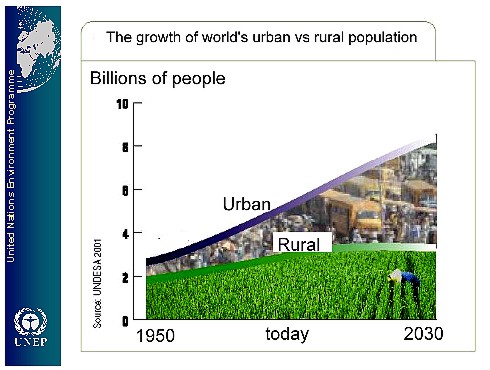
This slide shows the development and
future projections of urbanization. While less than one third of the lived
in cities in 1955, this will be two thirds in 2030. Developing countries
are following the same trends as the developed in urbanization. But as
urbanization in developing countries went hand in hand with economic
growth and increased welfare, this is not the case with developing
countries.
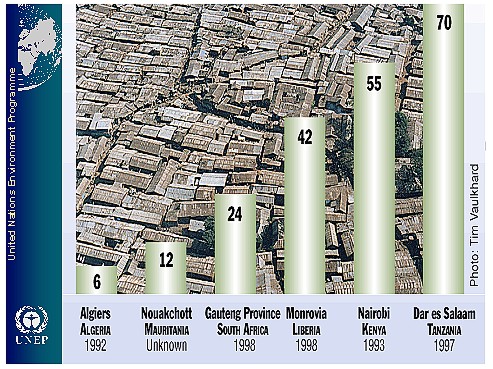
One of the results is informal settlements, in itself a hindrance for
proper development of the housing sector.
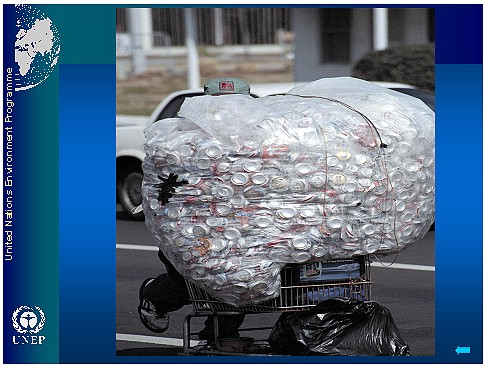
Amongst the major issues is waste. 75% of solid waste in cities in
developing countries are either left uncollected or disposed in open dumps.
In the urban areas of the world, 675 million people are lacking access to
sanitation and 619 million are lacking access to safe water. UN millennium
goal is to half this figures by 2015. The issues of Water, Sanitation and
Human Settlements is topping the agenda on the Global Meeting of Environment
Ministers arranged by UNEP in The Republic of Korea in March 2004. It is
also topping the agenda on the Commission of Sustainable Development when
they meet to their 12th session in New York in April next year. But despite
efforts and focus, with the current trends, the goals will not be achieved.
4. URBAN-RURAL LINKS
The urban development and urban environment cannot be seen isolated from
its surroundings.
This slide shows the daily “environmental balance” of a European city of 1
million inhabitants. (read from slide).
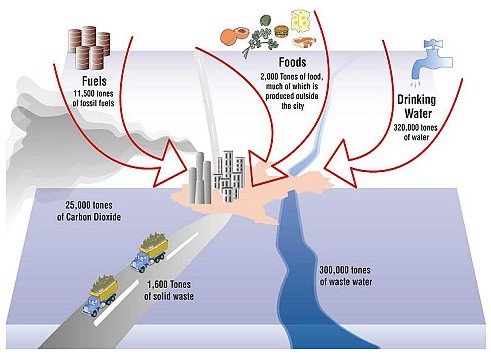
Growing cities needs an increasing supply of natural resources for their
production and consumption needs, which are brought in from rural areas
Cities generate pollution and environmental pressure. Some of the
pollution stays within the city but much affects the rural areas surrounding
the cities.
Cities can deplete natural resources such as forests, agriculture land,
water, air, recreation areas etc.
Let me say a few words about cities Environmental Footprints.
Cities consume massive amounts of environmental goods and services –
imported from ecosystems beyond their borders.
A city ecological footprint is the area of productive land and aquatic
ecosystems required to produce the resources used, and to assimilate the
wastes produced at a specific material standard of living, wherever that
land may be located.
The total productive capacity of the Earth is estimated at 11,4 billion
hectares (slightly less than 25% of the surface is biological productive,
the rest is desert, ice caps, deep oceans etc.). The global ecological
footprint covered 13.7 billion hectares in 1999, or 2,3 hectares per person
This is almost 20% above its theoretical capacity.
This is one way of explaining what today is evident - the Earth has
passed the status of sustainable development, meaning that we are leaving a
steadily decreasing availability of natural resources for the future
generations.
The London Trust co-founder, Herbert Giradet, has estimated London’s
footprint to approximately 21 million hectares, 125 times the surface area
of the city itself, or equivalent to all productive land in UK.
Other footprint studies show similar results. A study of 29 cities in the
Baltic Sea drainage area showed in average a footprint 200 times larger than
the cities themselves.
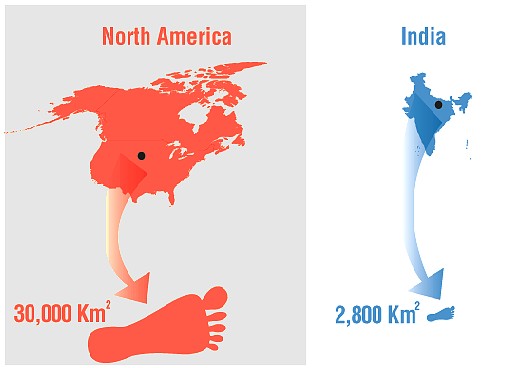
It is important to explain that high income groups contribute
disproportional to these footprints. A slum dweller in New Delhi require
only 0.8 hectares of land to maintain their minimal lifestyles, while
Americans in Boston or New York need 8.4 hectares to support their
consumption levels. The major challenge Sustainable Development faces today
can be formulated in the following two questions formulated by UNEP’s
Executive Director Klaus Toepfer in UNEP’s annual report 2001: How can we
alleviate the poverty of the majority without encouraging a massive increase
in unsustainable consumption? – and: How can we curb the excessive
consumption of the minority without harming the lifestyle that depend on
that consumption? In the face of the rapidly deterioration of our
natural resource base, these are issues the world needs to tackle. And these
are the issues that UNEP is working to address.
5. CONCLUSION
Given the known trend of urbanization, UNEP argues that urban and rural
development cannot be seen isolated or conflicting. To achieve sustainable
development the Ecosystem Approach might be used on the cities and its
hinterland. The Ecosystem Approach is a strategy for integrated
management of land, water and living resources that promotes conservation
and sustainable use in an equitable way.
Cities are finding that cooperation with the hinterland in protecting
watersheds that are used to produce drinking water for the city, is more
efficient and costs less than increasing investments in water filtration.
The city of New York has plans to buy land upstate to protect the watersheds
that are used for producing the city’s drinking water. This is part of a
watershed protection strategy that will cost 1.4 billion USD but is
estimated to save the city from having to spend 3 to 8 billion for new
filtration systems.
Increasingly this important dependency between rural productivity and
urban consumption is better understood. However, cities are not only
consuming what rural areas are producing, cities are also adding a lot in
the urban-rural interdependence. Cities provide facilities services and
jobs, and cities have always been the driving force behind rural
development. It is therefore crucial to analyze the urban environment
impacts of urbanization in the context of interdependent urban-rural
systems.
In conclusion: Efficient strategies for Urban-Rural Interrelationships
are a condition for Sustainable Development. The FIG President Dr.
Holger-Magel quoted in his opening speech yesterday UNEP’s Executive
Director Klaus Toepfer, about the Urban-Rural linkages: “this is a
fundamental policy lesson that we must carry into the twenty first century”:
a statement that sets strengthening of rural-urban linkages as an important
goal for UNEP
5.1 Finish-Rich-Poor
Mr Chairman, I could not address a distinguished audience of fellow
surveyors without showing a map.
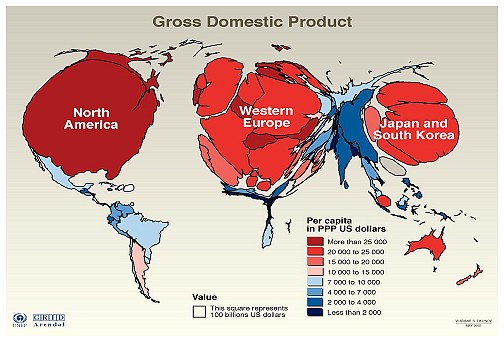
This metamorphic, or poor-rich projection of the world, produced by
UNEP’s GRID center in Arendal, Norway, is illustrating without the need for
more words the challenge the world faces today. A GNP map of the worlds
cities would give exactly the same result. We have to change this into a
normal map to make sustainable development for future generations a reality.
Current policy is not sufficient to turn the trend. The FIG president
mentioned in his speech yesterday that “FIG and its member associations
could be both enablers, mediators and advisors, and be strongly committed to
continue its contribution in helping to achieve a better and more
sustainable world in cities and countryside”.
Mr. Chairman, fellow surveyors, UNEP will be happy to find practical ways
to work with FIG to achieve these very important objectives.
CONTACTS
Svein Tveitdal, Director,
Division of Environmental Conventions
Division of Environmental Policy Implementation
UNEP
P.O. Box 47074
Nairobi
KENYA
Tel + 254 20 62 3507/8
Fax + 254 733 332374
Email: svein.tveitdal@unep.org
 |






























